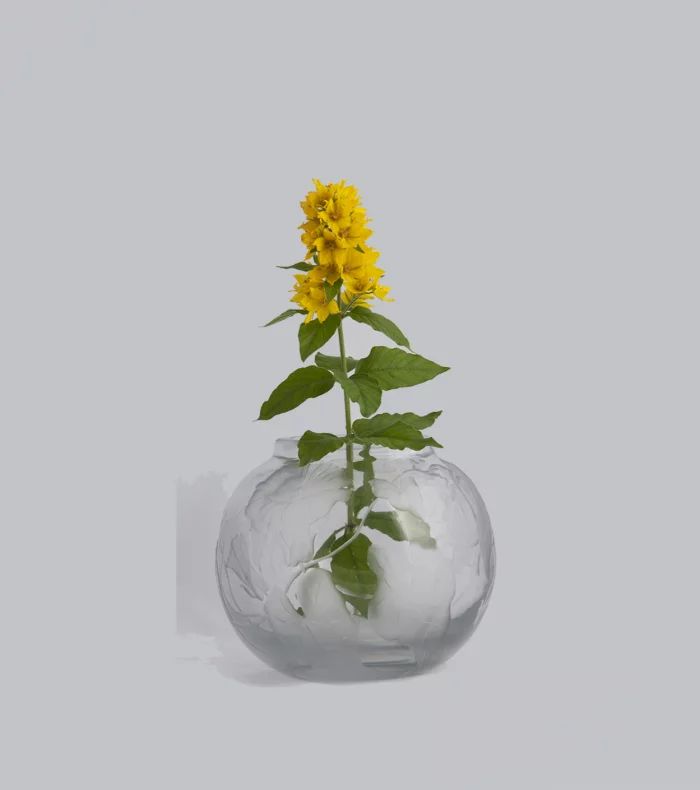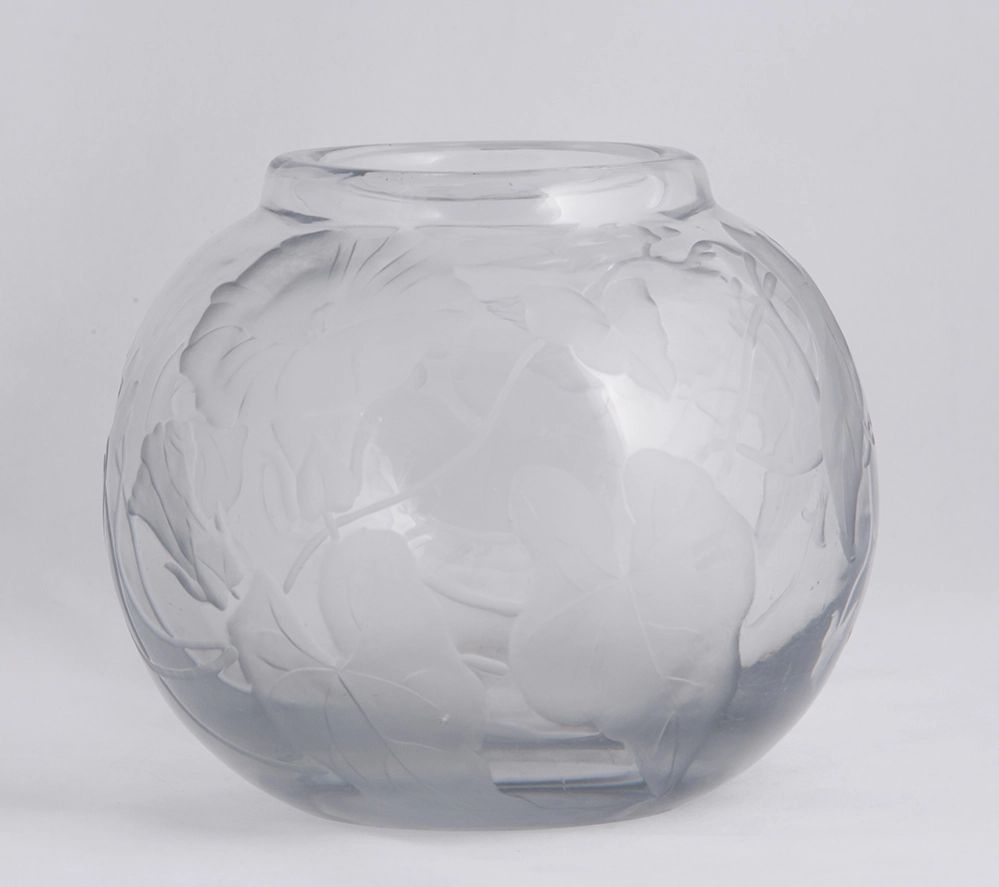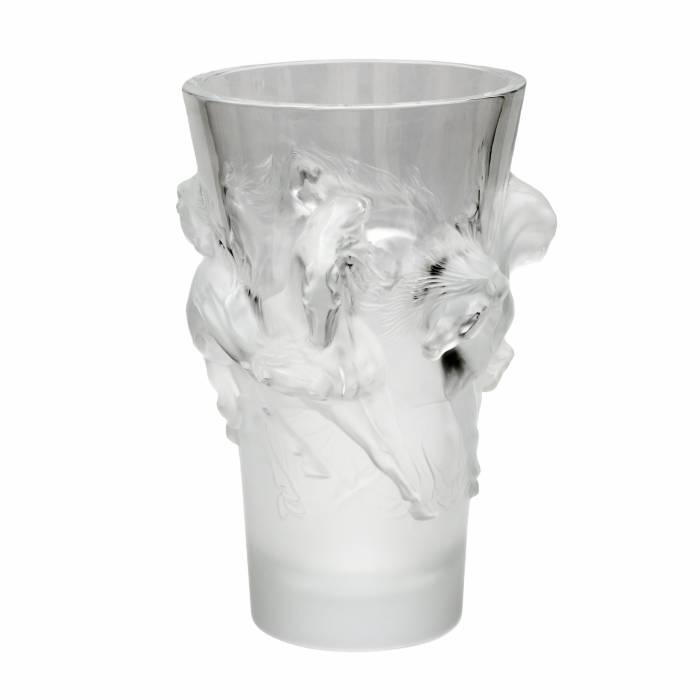
AntiqonART consultant will contact you within one business day after receiving your request.
Thank you for your request!
Our consultant will contact you soon.

AntiqonART consultant will contact you within one business day after receiving your request.




Spherical crystal vase Field Bindweed of the Imperial Glass Factory, 1914. An outstanding collector&39;s item, an example of the modest charm of Art Nouveau, in which simplicity, clarity, and the cosmogonic integrity of the sphere are intertwined. A sweet and touching motif of roadside bindweed, vividly not repeating itself in anything, envelops a heavy glass ball. The cascading and ascending pattern of the leaves is shaded by a noble gray-blue overtone, giving a unique charm and lyricism to this small universe.
Crystal, blown, carved, engraved, polished. On the base is a carved mark of HII under the imperial crown of Nicholas II, 1914







